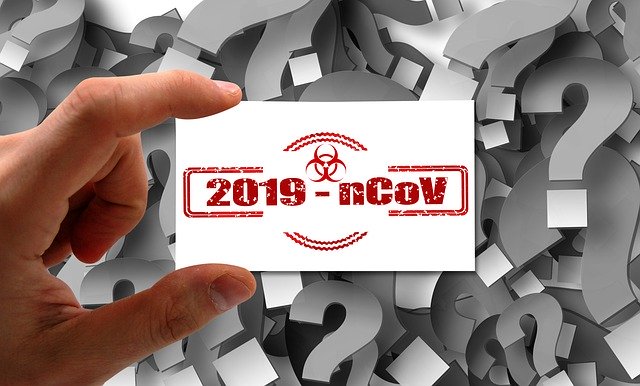Introduction
For the past week I have been reading newsletters and online posts about how companies are planning to reopen as local and state restrictions related to the COVID-19 pandemic are lifted. I want to identify key lessons and suggestions that will help managers plan for an uncertain future. One important theme I’ve found is the importance of understanding your employees’ pandemic experiences.
While doing this research, I’ve discovered two things: First is something I already knew – the amount of material available is substantial, with dozens of new articles being published every day. Second, the demonstrations and violent confrontations that took place after George Floyd’s death in Minneapolis have added a new dimension to the topic, opening up new conversations about racial inequality in America.
I’m going to continue to work on this topic and will publish additional findings and suggestions in my next article, coming in two weeks.
For today, I want to focus on understanding employees’ pandemic experiences. One article I read this week resonated strongly with me – “Managing the aftermath: How diverse employees experience the pandemic”. It was written by Alaina Love, the CEO of Purpose Linked Consulting, a talent management, employee engagement, team building and leadership development company. I reread Alaina’s article several times this week and have also reviewed the source material she cites. Both raise some important questions for managers to consider. They also provide some some timely and actionable insights for all managers at this moment in time.
Background and Context
Ms. Love describes new research by Pope Consulting, a diversity and inclusion firm in Cincinnati, Ohio, that explores how diverse employees from three ethnic groups (African American, Asian American and Hispanic American) and women have been affected by the pandemic.
The Pope report is based on the results of an anonymous digital focus group conducted in April, 2020. Before considering the findings, it is important to consider the scope and makeup of the participant group:
- There were 101 participants in the focus group.
- 45% of the participants were from the Northeast US, 25% were from the Midwest US, 1% were from outside the US.
- There was nearly equal representation across three age groups – Millenials, Gen X and Baby Boomers at roughly 33% each.
- 63% of the participants were women, 34% were men, 3% identified as non-binary.
- The racial / ethnicity makeup of the participants was:
- 49% White
- 27% African American
- 13% Asian-American / Pacific Island
- 7% Hispanic / Latin X
- 4% Mixed race
One limitation I see in the participant group is the apparent lack of representation by persons from India or the Middle East.
The findings report illustrates some of the unique challenges that the participants faced during the pandemic.
It is important to note that this was a small study. The findings should not be interpreted to represent national trends or the collective experience of any of the groups mentioned. At the same time, I think it is useful because it gives us an opportunity to consider the many different ways the pandemic has been experienced and suggests ways that we might start conversations with our employees. As managers, we need to be aware that our employees’ perceptions and experiences may be very different than our own. As the report notes, “while we all have shared similar experiences during COVID-19, we don’t share a common reality”.
Highlights From the Study
The study findings were organized at different levels, from individual perceptions to thoughts about teams, managers and the overall organization. Some highlights:
- 7 in 10 participants said that maintaining mental health has been their biggest challenge during the pandemic. Concerns include worry about family members who are elderly, at-risk or in positions identified as “essential”. Other concerns were lack of work/life balance and isolation from family and friends.
- 57% of participants reported struggling with anxiety. A majority of Asian-Americans and Black participants reported feeling fearful during the pandemic.
- Concerns about the future included being laid off, losing value in investments and reduction in pay and benefits.
- 79% of participants thought women were having to work harder – balancing work, extra household duties and having primary responsibility for teaching school-age children.
- 75% of Black participants reported knowing one to five people who had been infected with the coronavirus.
There were positive highlights as well, including:
- 87% of participants felt their interactions with peers as effective or very effective. This support came through virtual check-ins, one-on-one conversations and improved teamwork.
- 75% of individual contributors said their interactions with their managers were effective or very effective. They highlighted the importance of consistent communication, ongoing one-on-one meetings and demonstrating trust in employee’s abilities.
- 95% felt their organizations have responded to the pandemic effectively or very effectively.
Implications for Managers
As businesses around the world reopen, managers will face numerous new challenges including how to retrofit facilities to ensure employee and customer safety, how to change product and service mix to adapt to changes in customer buying patterns, and the fundamental challenge of generating sufficient revenue to stay in business.
On top of these operational concerns are new challenges related to employee health and well being. Managers will need to demonstrate heightened sensitivity to employee concerns and be alert to the new stresses that can affect employee attention, performance and morale.
The study showed that consistent and empathetic communication between managers and employees was an important factor during the pandemic. We can be certain that it will be equally important in the future.
A key takeaway for me from the study details, and from Alaina Love’s article, is the importance of recognizing the limits of our mental models and our biases. As a white American male Baby Boomer raised in the southern US, my perspective has been shaped in ways far different than many of the people with whom I work. I can’t assume I understand the experience of a single working Asian American woman or that of a Black man from a major city. But I can engage in a dialogue with them, ask questions and demonstrate empathy. I can build relationships with my employees and consistently conduct 1-on-1 meetings. And most importantly, I can act on what I learn to create a more positive working environment.
The Five Questions
Ms. Love ends her article with a list of five questions that will help managers “gain a deeper understanding of employee experiences and needs”. While her overall emphasis was on the impacts to diverse employees, I believe these questions make sense for any manager to use with any employee as part of their 1-on-1 discussions. The questions are:
- In what ways that I might not be aware of has this pandemic affected you?
- (If team members are Asian, African American or Hispanic/Latino [or Indian, Middle Eastern or from other non-white populations – MJ]): I understand that there has been a disparate impact in certain communities based on their race/ethnicity composition. Have you been affected because of this? Is there any type of additional understanding or support that you need from me?
- Since the pandemic began, are you experiencing any new difficulties with co-workers or others that you attribute to your race, ethnicity or gender?
- (When speaking with female employees with children or single parents): I’ve learned that many women/single parents have shouldered most of the home schooling tasks with kids, even though they too had a full-time job outside of the home. Is there anything I can do to better support your transition back to the workplace, especially now that the school year is coming to a close and many summer activities for kids are still in limbo?
- I know we have spoken about the implications of COVID-19 on our business, but would it be of benefit for us to have more team sessions where we discuss how we’ve each been affected by this crisis on a personal level?
Conclusion
As managers, we have always had a responsibility to ensure that our employees are safe in the workplace. The Coronavirus pandemic has brought new meaning to that responsibility by introducing new concerns and stresses into the lives of our employees. Alaina Love’s article and the Pope Consulting study highlight the impacts that may be real for minority and female employees. Ms. Love has also provided the five questions that give managers an entry point for discussions with each employee about his or her experiences and concerns.
I highly recommend you take a few minutes to read Ms. Love’s post, review the Pope study findings and to incorporate the five questions into your 1-on-1 meeting agendas.
Until next time, be safe.
To your success,
Mike
Join the discussion…
What unique experiences or concerns have you heard from your employees? How have you responded to them?
Leave a comment below or send your thoughts using the Contact Form.


Thank you for bringing common concerns to the forefront along with a reminder that there is good news. I hope you will address resiliency in the future.